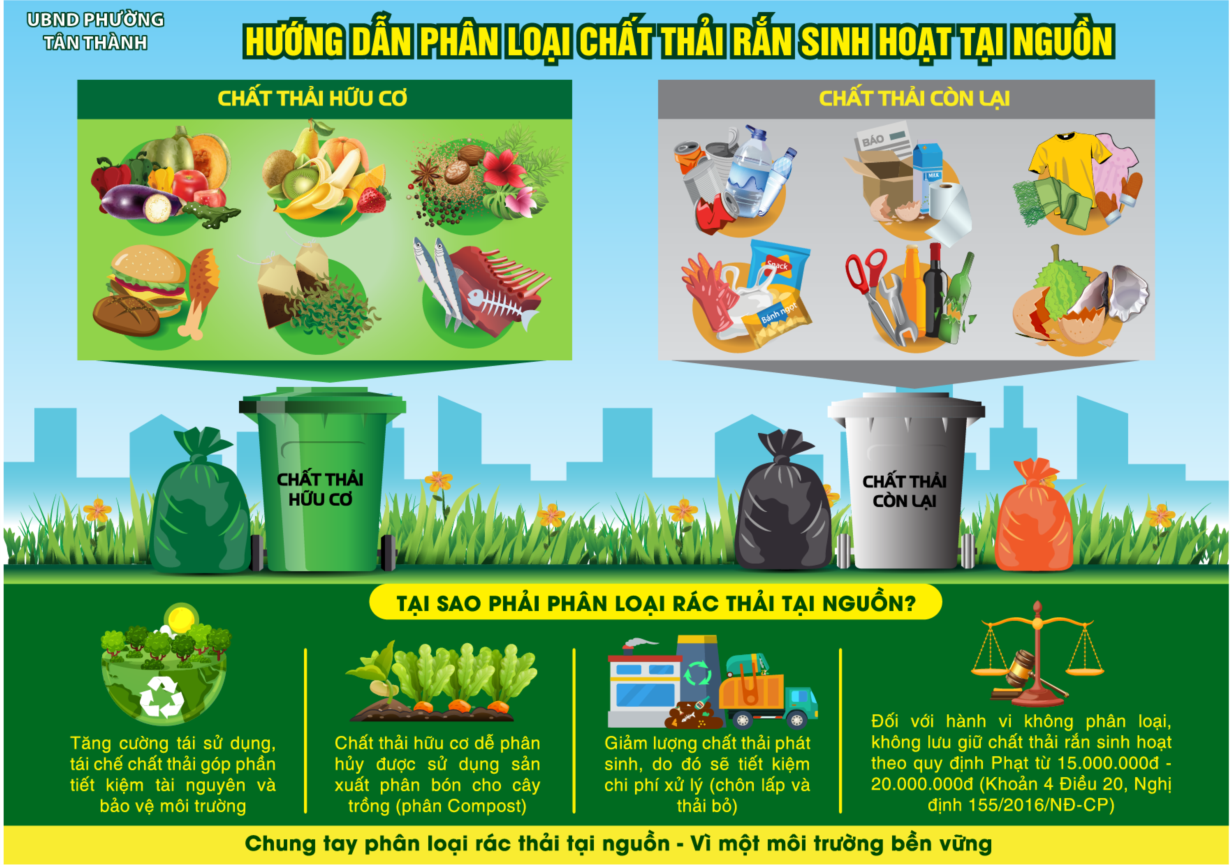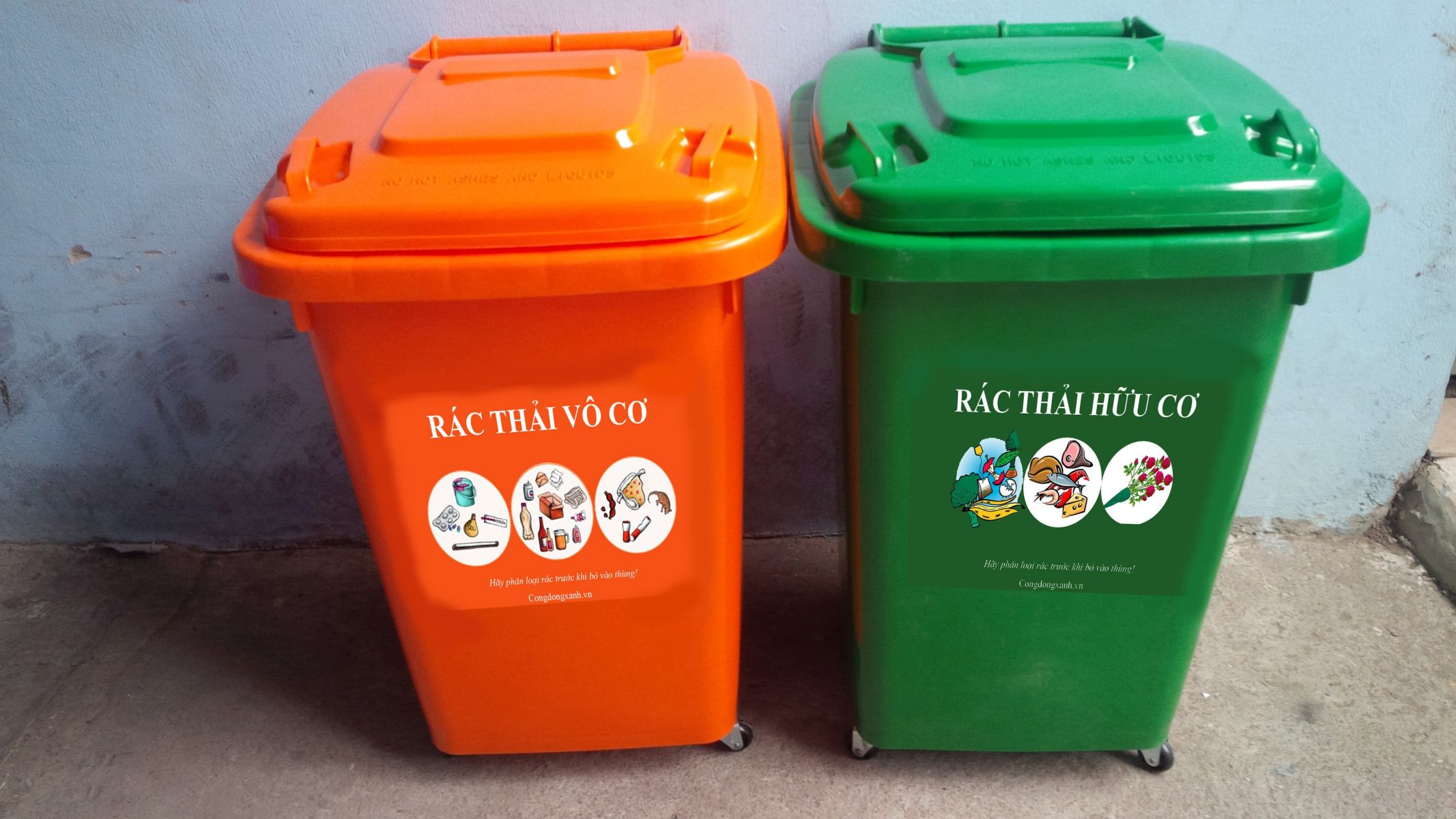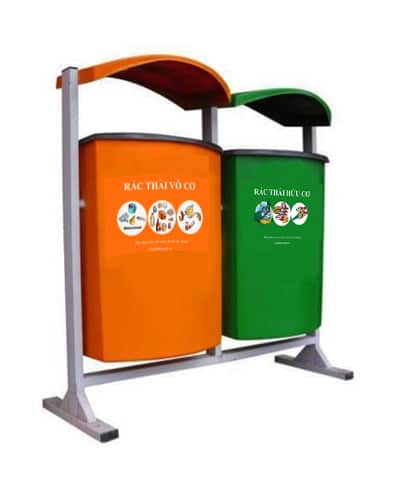The practice of waste classification plays an important role in the management of substances, contributing to minimize the risk of spreading pathogens, toxic and dangerous factors. Proper classification also contributes to saving resources, reducing costs for waste collection and disposal.
1. Sort waste at source
1.1. Methods of waste separation at source
Household waste before being processed, should be sorted immediately at the household.
How to identify it as follows:
- Persistent organic waste: is the type of garbage easily decomposing in natural conditions that give off a stench such as: leftover, damaged food items (vegetables, dead fish ...), fruit peels, ...
- Persistent waste is divided into 2 categories: recyclable and non-recyclable. Recycled waste is the kind of trash that can be reused many times directly or reprocessed such as paper, cardboard, metal (iron frame, broken ship engine, aluminum ...), plastics (bottles, containers) household plastic)…. The rest of the non-recyclable waste is the waste.

1.2. Why must separate waste at source
- Sorting waste at source contributes to saving resources; benefit the owner of the waste from taking advantage of recycled waste and self-processing compost;
- Sorting waste at source contributes to reducing pollution;
- Sorting waste at source contributes to raising public awareness about the protection and rational use of natural resources and the environment;
- Sorting waste at source contributes to reduce the total amount of waste in the community to the environment in order to reduce the load on the environment, saving collection, transportation and handling costs.
2. Methods of garbage collection
- Collection of easily biodegradable organic waste:
Collecting separately into garbage containers to make use of as compost (at home or taken to a central processing plant into compost).
- Collecting hard-to-decompose garbage
+ Recycling garbage: Recyclable waste is separated and stored in plastic bags or cloth bags for resale to recycling establishments.
+ Non-recyclable garbage collection: Non-recyclable waste components will be collected and stored in household garbage containers and taken to the gathering place for specialized vehicles to be transported for treatment at concentrated waste treatment areas as prescribed.
Garbage containers are special-use garbage bins or make use of available household items such as baskets, baskets, sacks, plastic bags, etc.

Waste bins collect and classify waste at source.

Garbage collection bins in public places
3. Methods of waste disposal
+ Burying them in a sanitary manner:
Rubbish is spread in layers, compacted to reduce the volume and covered with soil (spraying chemicals to increase the effectiveness of handling and limiting insects) with the following process diagram:
 Sơ đồ phân loại rác
Sơ đồ phân loại rác
Hygienic burial sites with gas collection systems, garbage water collection and treatment systems.
This technology is simple and low cost, suitable for poor and developing countries but consuming a large area of land.
+ Burn:
The process uses high temperatures (1,000-1,100C) to decompose garbage. The outstanding advantage of this method is that it significantly reduces the volume of waste to be buried (slag, ash). However, the cost of investment and operation of the waste incineration plant is quite high, consistent with advanced and developed countries.
Developed countries also use waste burning plants to generate electricity, turning garbage into useful fuel. Some provinces and cities in our country have adopted the burning method but mainly to treat hazardous waste.
+ Processing waste into compost:
Processing easily decomposed organic waste into compost for agriculture.
• Scale of centralized processing: Sorted waste, easily decomposed organic waste are separated, crushed, aerated and composted to create compost. Establishing a composting processing plant requires a large investment capital and relatively high operating costs.
• Household size: Decomposable organic waste is sorted separately and composted into compost right in the yard.
Compost is a stable humus obtained from the decomposition of organic matter, does not contain pathogens, does not entice insects, can be stored safely and is beneficial for plant growth. Compost is essential for plants, it both provides nutrients for the tree, while maintaining soil fertility.
Nguyen Linh - Good prices are always for you
Quality and prestige